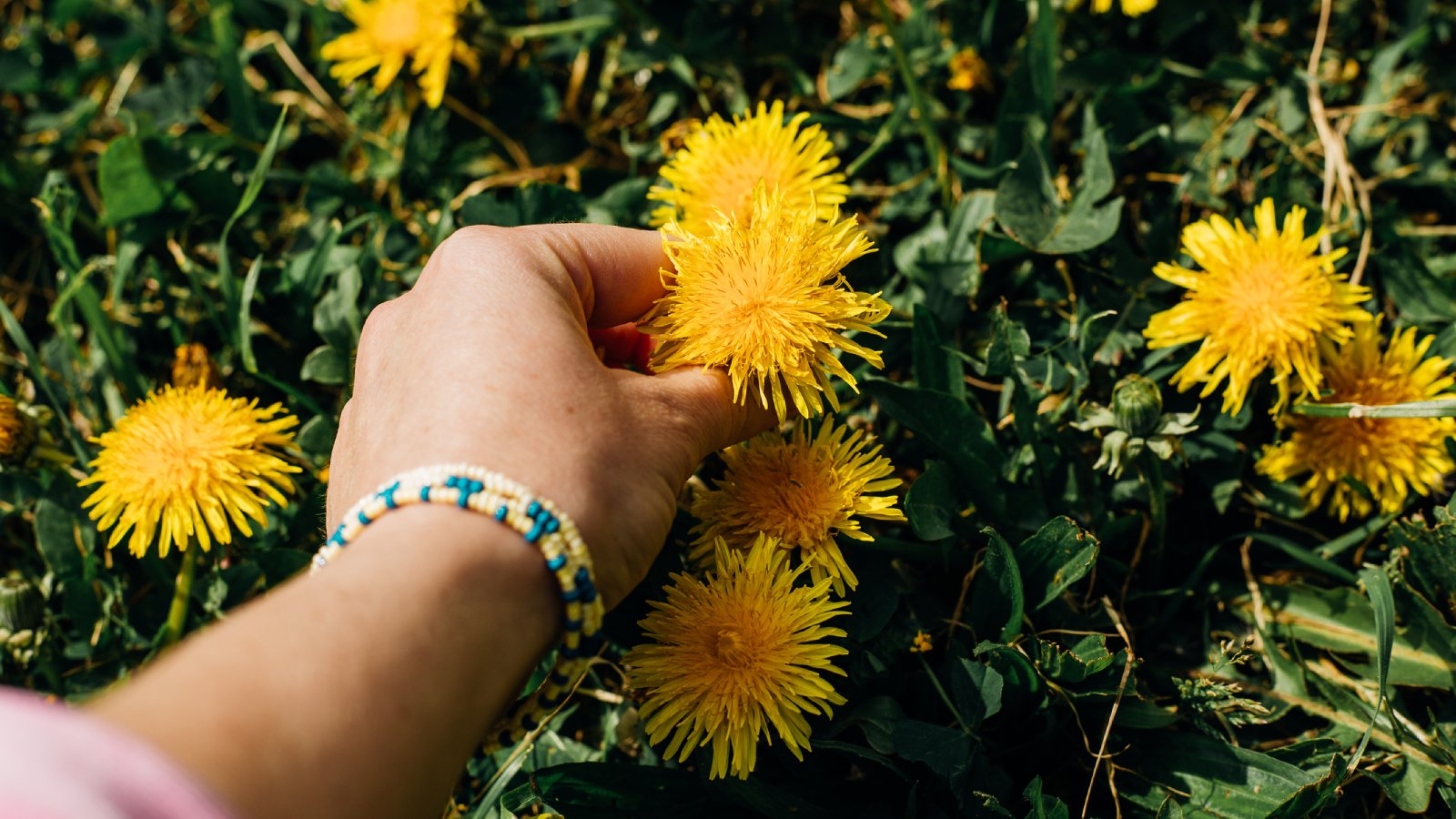Foraging Flowers: How To Forage Floral Plants – And Which Flowers You Can Pick For Free Edibles!
It’s fun to forage flowers, but it’s important to know the rules. Avoid areas that have been sprayed, beware of imposters and take only what you need.


One may first become interested in foraging for wild edibles for a variety of reasons. For many, safely identifying and harvesting wild edible plants offers a sense of unity and an unparalleled connection to nature. Learning how to forage flowers and vegetation properly will play a vital role in this journey. Below, we will explore the concept in greater detail, with an emphasis on foraging etiquette and best practices.
Where & When to Forage for Edible Flowers
Where and when to forage floral plants will vary widely. Becoming more familiar with native species and their growth cycle is most helpful. Understanding a plant’s bloom period can help with your search.
First-time foragers also need to consider where the desired plants can be found. Harvesting from your own property or yard is often best. This is especially true if you live in rural regions where wild plants are likely to be much more abundant. Foraging can also be done elsewhere in public spaces where it’s permitted, but you should never forage wild foods within the bounds of private property without clear, express permission from its owner.
How to Forage for Edible Flowers
Flower foraging begins by correctly identifying the intended plant. Only the healthiest plants, free of disease and damage from insects, should be selected. Also, consider whether the area has been treated with chemical sprays and avoid those that have been exposed to herbicides or pesticides.
Experienced foragers urge us to practice a sustainable approach to harvesting, taking only what is needed. This allows for the continued growth of the plant and repeated flowering or fruit production in the future. Many advocate for a “leave no trace” policy, leaving foraging spaces impacted as little as possible by their visitors. Foragers should always avoid the complete removal or destruction of wild edible plants, specifically, those viewed as uncommon or rare. Endangered or threatened species may even be protected by law from foraging.
Identifying Safe Flowers for Foraging
Proper identification of safe flowering plants to forage is paramount. Wild plants should never be consumed, in any capacity, without certainty. Since many edibles have toxic counterparts, always use extreme caution when foraging for native species. Becoming more familiar with each plant’s appearance, growth cycle, and properties can be extremely helpful. If you are new to the idea of foraging, you may benefit greatly from attending local foraging classes or seminars, studying texts, and completing online courses to better understand how to safely collect wild edible plants.
1. Blackberry
Blackberries are often considered among the best plants for first-time foragers. Wild blackberry canes are easy to identify in summer, as their thorny stems burst into bloom. Pristine white flowers are followed quickly by aggregate fruits. Though their signature color is sure to draw the eye, be aware that harmful look-alikes may be present in some regions.
Sign up for the Gardening Know How newsletter today and receive a free copy of our e-book "How to Grow Delicious Tomatoes".
2. Dandelion
Though most of us can recognize this common weed, many are unfamiliar with its use. Dandelions can be found nearly everywhere, identified by their cheerful bloom and toothy foliage. Though abundant, experts advise against picking these plants from lawns, where they are much more likely to have been treated by sprays or fertilizers.
3. Mulberry
Like blackberries, mulberries are often recognized by their large, clustered fruit. Though native mulberries can be found, many species growing in the wild are the result of invasive types from China. Be sure to correctly identify these before eating them, as several impostors may also grow throughout certain regions.
4. Pawpaw
Popular throughout much of the eastern United States, pawpaw trees are loved for their unique custard-like fruit. These plants are most often found in forests and along the edge of meadows, where conditions are ideal.
5. Ramp
Also known as wild leek, ramps are often considered a treasure by foragers. These distinctive plants can be found in spring, offering those who find them a memorable, pungent flavor.
6. Violet
Among the most common flowers in early spring, violets have much to offer. Most are found growing throughout shaded lawns or fields, with colonies often producing large blankets of color. Violet flowers are especially popular in cooking and are used to make teas, jellies, and even candy.
7. Wild Rose
Native species of rose can be found almost anywhere, as well as invasive types, which closely mimic their appearance. Both wild rose petals and hips are rich in nutrients and can be harvested throughout the season. Exceptional uses for wild rose hips include jams, jellies, and other baked goods.
Frequently Asked Questions
What Should You Avoid When Foraging Flowers?
Plants kept safely away from pollution and other types of contamination are best. Always avoid foraging for plants in high-traffic areas or other places where the plants’ health may have been compromised. Plants showing damage or any sign of disease should also be avoided.
Is It Safe to Forage Wildflowers?
Foraging can be a fun and rewarding activity, provided it is done safely. Learning to properly identify and process edible plants is essential. This includes better familiarizing oneself with local species, common toxins, and the effect of foraging on the ecosystem as a whole.

Tonya Barnett has been gardening for 13 years. Flowers are her passion. She has transformed her backyard into a cut flower garden, which she regularly chronicles on her YouTube channel http://www.youtube.com/@tonyawiththeflowers.